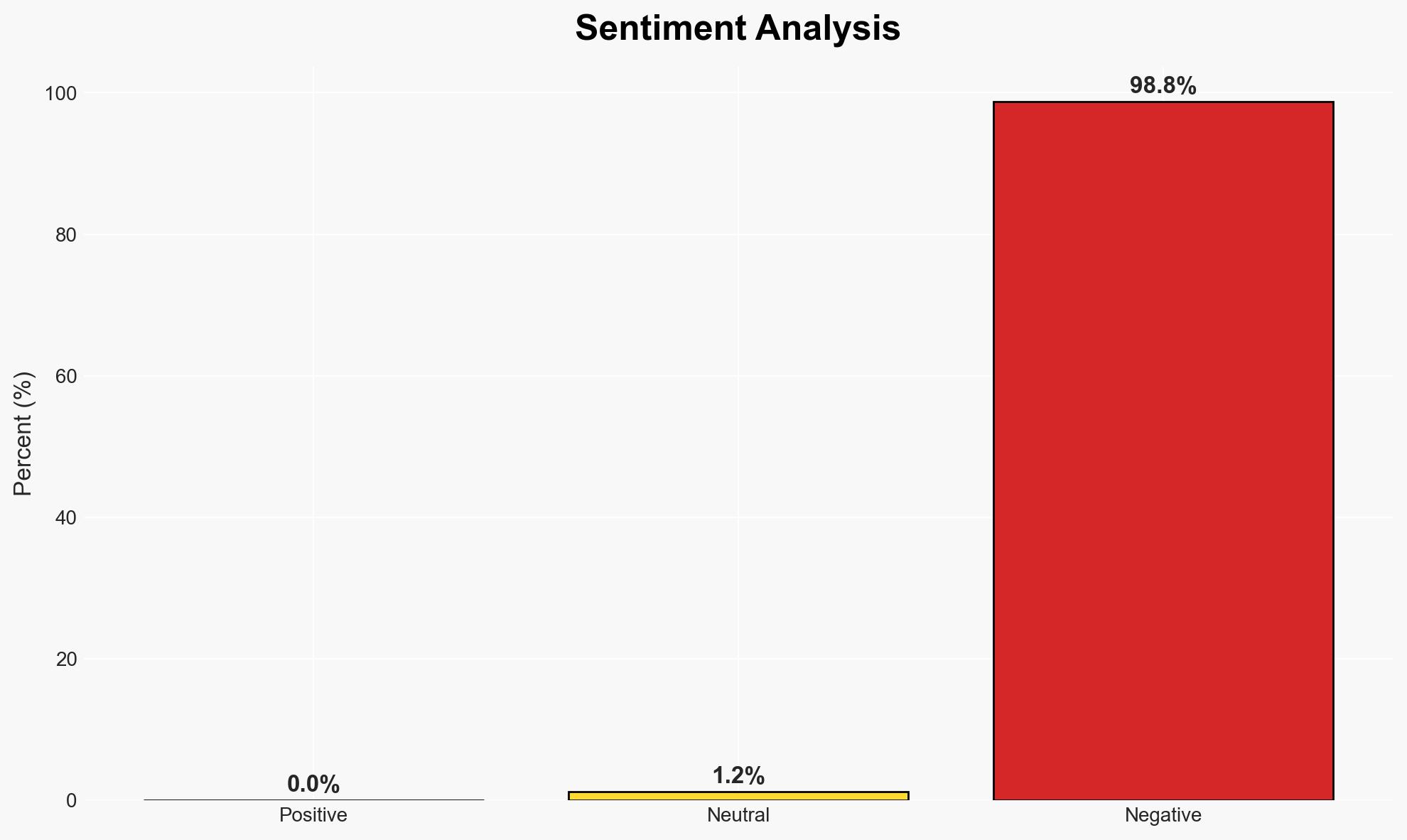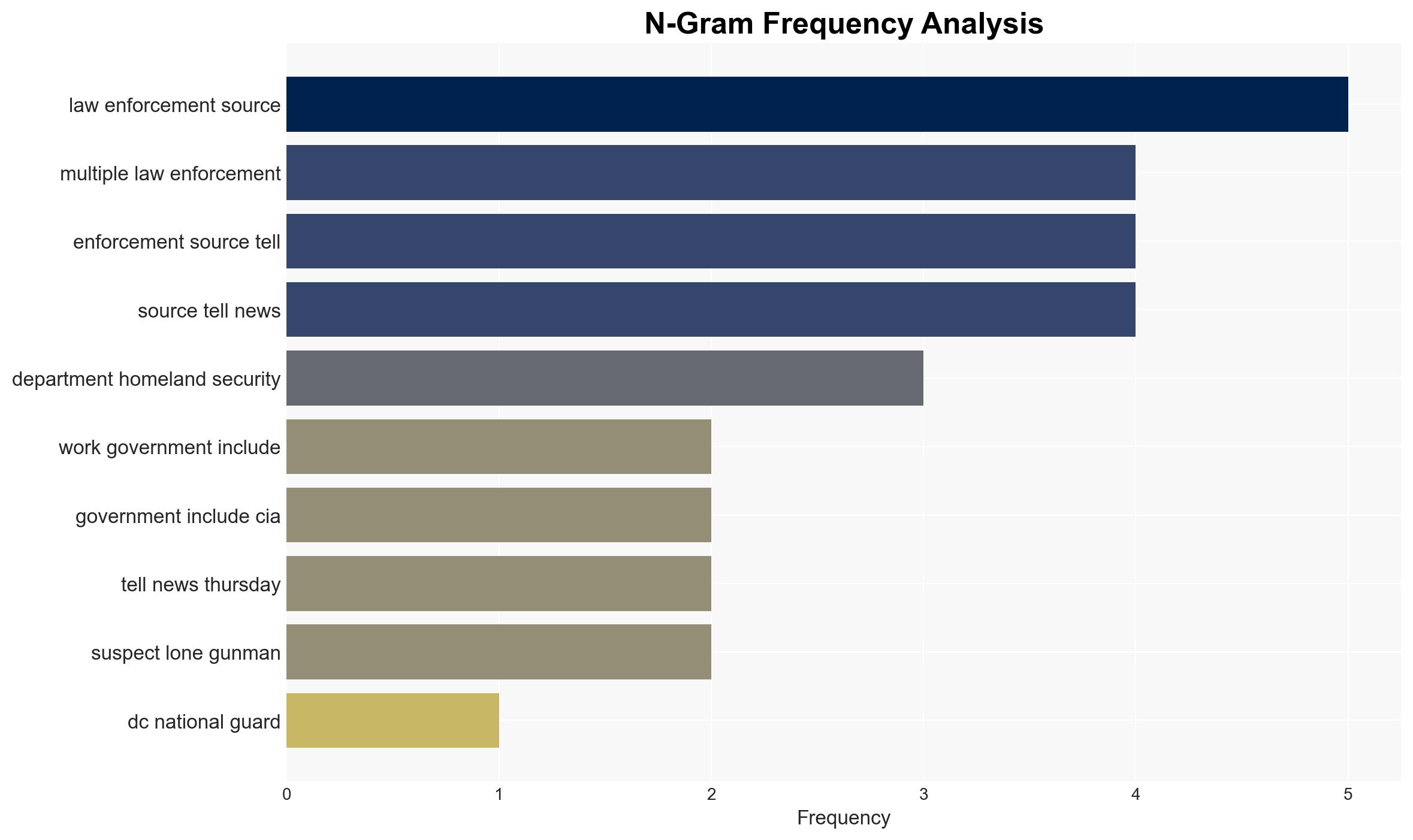Afghan National Identified as Suspect in National Guard Shooting Near White House
Published on: 2025-11-27
AI-powered OSINT brief from verified open sources. Automated NLP signal extraction with human verification. See our Methodology and Why WorldWideWatchers.
Intelligence Report: Suspect in National Guard shooting identified as Afghan national Here’s what we know
1. BLUF (Bottom Line Up Front)
The suspect in the National Guard shooting near the White House has been identified as Rahmanullah Lakanwal, an Afghan national previously affiliated with the CIA. The incident raises concerns about the integration and monitoring of individuals with military backgrounds entering the U.S. under humanitarian programs. The most likely hypothesis is that the suspect acted alone due to personal grievances or mental health issues, with moderate confidence in this assessment.
2. Competing Hypotheses
- Hypothesis A: Lakanwal acted alone due to personal grievances or mental health issues. Supporting evidence includes his known mental health challenges and lack of cooperation with authorities. Contradicting evidence is limited but includes the potential for undisclosed motivations or influences.
- Hypothesis B: Lakanwal was part of a larger network or influenced by external actors. This is less supported due to the absence of evidence indicating coordination with others or ideological motivations.
- Assessment: Hypothesis A is currently better supported due to the lack of evidence for external coordination and the suspect’s known mental health issues. Indicators such as communication with known extremist networks or discovery of planning materials could shift this judgment.
3. Key Assumptions and Red Flags
- Assumptions: The suspect’s actions were not coordinated with external groups; mental health issues significantly influenced his behavior; current information about his background is accurate.
- Information Gaps: Details about Lakanwal’s recent communications and activities; comprehensive psychological evaluation results; any potential connections to extremist groups.
- Bias & Deception Risks: Potential bias in interpreting the suspect’s motivations due to his background; risk of deception in suspect’s statements or lack thereof.
4. Implications and Strategic Risks
This incident could impact U.S. policies on refugee and asylum processes, especially concerning individuals with military backgrounds. It may also influence public perception and political discourse on national security and immigration.
- Political / Geopolitical: Potential for increased scrutiny and debate over immigration policies and national security measures.
- Security / Counter-Terrorism: Heightened alertness and review of individuals with military backgrounds entering the U.S. under humanitarian programs.
- Cyber / Information Space: Possible exploitation of the incident by adversaries to influence public opinion or policy through misinformation.
- Economic / Social: Potential social tensions and stigmatization of Afghan refugees and asylum seekers.
5. Recommendations and Outlook
- Immediate Actions (0–30 days): Enhance monitoring of individuals with military backgrounds in humanitarian programs; conduct a thorough investigation of the suspect’s background and communications.
- Medium-Term Posture (1–12 months): Review and potentially revise vetting processes for asylum seekers with military affiliations; strengthen community engagement to mitigate social tensions.
- Scenario Outlook:
- Best: Incident is isolated, leading to improved vetting processes without significant social or political backlash.
- Worst: Incident is linked to a broader network, resulting in heightened security threats and severe policy restrictions.
- Most-Likely: Incident remains isolated, prompting policy reviews and moderate public debate.
6. Key Individuals and Entities
- Rahmanullah Lakanwal – Suspect
- Department of Homeland Security
- Central Intelligence Agency
- U.S. National Guard
- Kristi Noem – Secretary of Homeland Security
7. Thematic Tags
Structured Analytic Techniques Applied
- ACH 2.0: Reconstruct likely threat actor intentions via hypothesis testing and structured refutation.
- Indicators Development: Track radicalization signals and propaganda patterns to anticipate operational planning.
- Narrative Pattern Analysis: Analyze spread/adaptation of ideological narratives for recruitment/incitement signals.
Explore more:
Counter-Terrorism Briefs ·
Daily Summary ·
Support us





